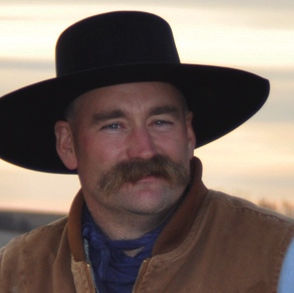Worry less about your neighbor
Every day, people talk to me about the disconnect between consumers and where their food comes from and the general misinformation that surrounds this issue. I prefer to spend my time working on setting the record straight to ensure that consumers, globally, make purchase decisions based on facts rather than rhetoric from folks who want to eliminate milk, meat and egg consumption.
Instead of working on educating folks outside of our circle in beef production, I see too many who would rather tear down their neighbor and cause division. That is damaging to the entire beef infrastructure and basically all of agriculture.
First, I see niche beef producers attempting to market their production by casting a long shadow of doubt on commercial operations. If you raise and sell grass fed, organic or “this beef has traveled to the moon” beef, you should do it based on what you do that makes your product better but not by telling lies about your competition. Misleading the consumer doesn’t help anyone in the beef industry and the shear confusion may result in consumers not choosing beef at all.
Furthermore, the growing division I see occurring in the beef industry stems primarily from Bill Bullard of R-Calf USA.
This organization, from its inception, has been built on one issue: stopping live imports of cattle. They championed for the now defunct mandatory Country of Origin Labeling law. No matter where you stand on the oldest arguments I know of in agriculture, here are some facts about mCOOL that Bullard never shares about his membership driving tool: All ground beef and all beef served through foodservice was exempt as the law was written and implemented.
Where does the majority of imported beef end up? It is overwhelmingly trim from Australia (where we have reached only 38.6 percent of the quota established) and it goes into ground beef. According to the law, it was exempt anyway. In a nutshell, we sell high value to beef to other countries and import lower value cuts to add to our trim to sell to the United States consumer as ground beef. No other country in the world consumes ground beef like we do. So at the end of the day it is a win/win for the consumer and the producer.
Now the discussion obviously moves over to live cattle imports. Yes, year to date beef imports from Canada and Mexico have increased by 1 percent. The total number annually is about 1 million head of the roughly 33 million head harvested each year. Quite frankly, as a beef producer, I feel like the larger the infrastructure the more solid the market is. Naturally the sheep analogy is perfect to draw at this time because in 1932 we had a sheep inventory of 60 million head and today it is less than 6 million, primarily driven by loss of infrastructure.
Whether we like it or not, commercial production today, in all industries, is driven by volume and economy of scale. The bigger the U.S. beef production sector gets, the better we are positioned globally. Additionally, what about the U.S. families who have worked at improving the genetics on both sides of our borders?
The other concept that gets overlooked is that those cattle that come into the U.S. as live animals are purchased by U.S. cattlemen as stockers and owned by a U.S. cattle feeder and sold under some agreement to the packer. The U.S. beef production infrastructure benefits from this and I, as a Nebraska cattleman, benefit as well.
For those that actually look at the real numbers you will see this is all playing out. The Economic Research Service/U.S. Department of Agriculture statistics revealed that beef exported from the U.S. in 2018 is 15 percent higher than one year ago. I haven’t heard anybody report the fact that beef exports to China are up by 2862.49 percent in 2018. Yes, the decimal is in the correct spot.
South Korean imports, even before the recently announced trade deal, were up by 28 percent. In fact, nearly all of the 118 countries we sell beef to have increased U.S. beef imports. U.S. beef has earned the reputation as the premium product in the world and we need to work at continuing that because all cattle owners will benefit.
Finally, if it is the large packers that process and market the beef that you have a problem with, then don’t use them. Sell your own product to the consumer. Personally, we don’t use any of the major packers for our cattle or pigs. We recently signed a contract to be part of the supply chain for the Certified Piedmontese system. Those animals do not go through any major packer and are marketed directly to the consumers willing to pay a premium.
For our pig production, we sell breeding stock and show pigs and market Loos pork directly to consumers. However, I fully understand that the better large producers do at increasing the pork production infrastructure, the better off we are going to be.
At the end of the day I see two camps developing in agriculture. One camp sees how competition is going to make them stronger and allow them to carve out their own place in the food production system. The other camp includes those that spend all of their time trying to limit what the other guy is doing and just get in the way of forward progress for everyone in the country and ultimately for marketing our great products around the world.
Editor’s note: Trent Loos is a sixth generation United States farmer, host of the daily radio show, Loos Tales, and founder of Faces of Agriculture, a non-profit organization putting the human element back into the production of food. Get more information at www.LoosTales.com, or email Trent at [email protected].

